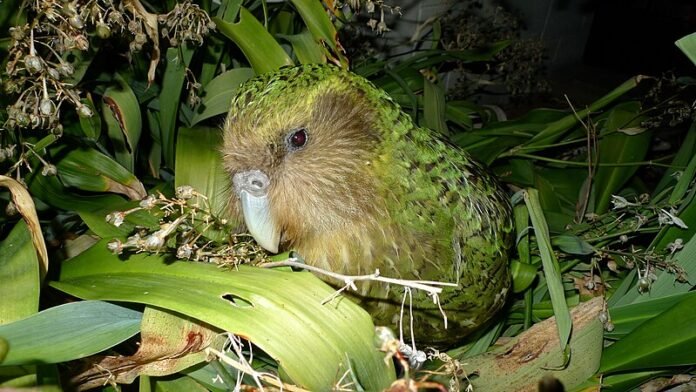Kākāpō parrot (also known as “owl parrot” because of its owl-like facial features) is a critically endangered parrot species native to New Zealand. It is an unusual animal for it is the longest living birds in the world (may live up to 90 years of age). Weighing about 3-4 Kg, it is also the heaviest, only flightless and nocturnal parrot in the world.
Kākāpō inhabited New Zealand since their evolution in isolation but their population declined rapidly. In 1970s, only 18 male kākāpō were known to exist. Existence of female Kākāpō were confirmed in 1980. Thanks to Intensive conservation management, Kākāpō parrots have been brought from the brink of extinction. Their number was 51 in 1995. Today, 247 kākāpō are alive1,2.
To assist conservation, Kākāpō125+ project came into being in 2015 to sequence the genomes of 125 living kākāpō plus some important recently deceased individuals. The idea was to improve genetic management of kākāpō, particularly to address low reproductive output (infertility) and disease that was hindering recovery. The full chromosome-level assembly of the reference genome of an individual kākāpō was completed in 20183.
In a study published on 29th August 2023, the research team has reported sequencing the genomes of nearly the entire kākāpō population (as of 2018) of 169 kākāpō, from 125 living individuals and 44 stored samples. The population level data associate genetic diversity across the species to specific DNA sequences linked to traits such as disease susceptibility, chick growth etc. This could help identify health risks earlier to plan treatment customised to individual kākāpō bird. This approach to identify specific genetic features crucial to survival could be repurposed to manage conservation of other endangered species4,5.
***
References:
- Department of Conservation. Govt of NZ. Kākāpō Recovery. Available at https://www.doc.govt.nz/our-work/kakapo-recovery/
- Natural History Museum. New Zealand’s quirky kākāpō are pulled back from the edge of extinction. https://www.nhm.ac.uk/discover/new-zealands-quirky-kakapo-are-pulled-back-from-extinction.html
- Department of Conservation. Govt of NZ. Kākāpō125+ gene sequencing https://www.doc.govt.nz/our-work/kakapo-recovery/what-we-do/research-for-the-future/kakapo125-gene-sequencing/
- University of Otago 2023. News – Saving species from extinction – high-quality kākāpō population sequencing provides breakthrough in understanding key conservation genetics. Available at https://www.otago.ac.nz/news/otago0247128.html Acessed on 29 August 2023.
- Guhlin, J., Le Lec, M.F., Wold, J. et al. Species-wide genomics of kākāpō provides tools to accelerate recovery. Nat Ecol Evol (2023). https://doi.org/10.1038/s41559-023-02165-y Preprint at bioRxiv doi: https://doi.org/10.1101/2022.10.22.513130
***






































